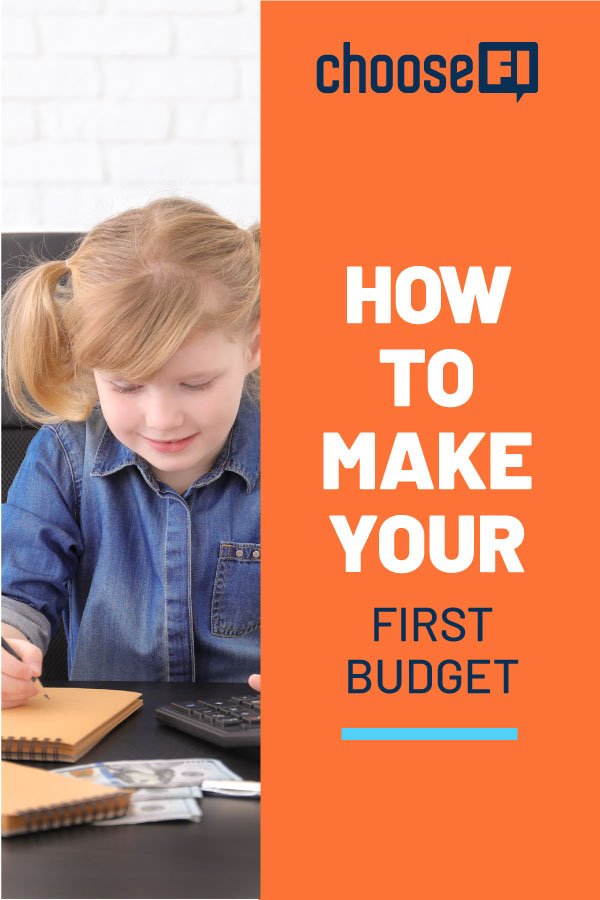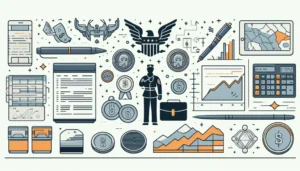I used to cringe when I heard the word “budget.” It conjured up images of prison and shackles for me–of a life where fun was nowhere to be found and responsibility was the one and only goal. That’s when I learned how to budget.
Believe it or not, I love budgeting today. I make my budget faithfully before the first of each month, and I visit it often just to check in.
How did I go from budget hater to budget BFF? By learning some hidden truths about budgeting for responsibility and fun. Here are some budgeting tips that will help you create a solid financial foundation for yourself and/or your family.
Table Of Contents
- You Know How To Budget-Or Do You?
- Putting Your Budget Together
- Utilize Budgeting Tools
- Tracking Your Spending
- Tweaking Your Budget
- Giving Your Budget A Boost
- The 90 Day Challenge
You Know How To Budget–Or Do You?
Believe it or not, budgeting is more than just designating your money toward paying bills. Budgeting done right is a design for your life–and you can design it any way you see fit.
We’re going to talk about budget basics, but more importantly, we’re going to help you create a budget that makes it fun to pay bills, to save–and yes, to spend.
A Good Budget Starts With A Why
Budgeting is, in a nutshell, making a plan for your money. However, people make budgets and fail to stick with them all the time. Why? Partly because they don’t have a good reason to follow them.
This is why your “why” is so important. Take some time to think about why a budget is important to you. Will it bring much-needed peace and organization to your life? Will it help you reach your financial goals? What are your financial goals?
Determine the answers to these questions and write them down. Make a declarations list of sorts that reminds you of why having a working budget is so important to you.
Put the list somewhere where you can refer to it easily and often. Doing so will help keep you on track when you’re tempted to toss your budget aside.
Next, let’s go over some tips for creating the perfect budget for you.
Creating Your Personalized Budget
If you want a budget that works you’ve got to create a personalized budget. We’ll share some guidelines and ideas with you, but your budget will work best if it’s personalized to your situation.
Start By Writing Down All Of Your Monthly Expenses
I suggest starting your budget by writing down every monthly expense you have. Rent, car payment, groceries, your cell phone bill–all of it. The list of suggested budget categories here might help if you’re having trouble remembering your monthly obligations. Go through your bank statements to find those hidden expenses.
Related: How To Find And Cut Your Recurring Expenses
Suggested Budget Categories
Because budgets are personal, your budget categories might vary from other people you know. Some common budget categories to remember as you create your budget are:
- Housing
- Utilities (gas, electricity, water, trash, phone costs, etc.)
- Home repair and maintenance
- Transportation
- Groceries
- Insurance
- Clothing
- Medical
- Personal
- Debt payments
- Entertainment
- Savings
- Retirement savings
- Pet costs
- Extracurricular activities for kids
- Childcare
- Salon costs
- Gym costs
- Cable or satellite TV costs
Notice that I included savings and retirement savings in my budget category suggestions. This is because you have a much higher chance of creating a solid savings picture if you treat your savings like a bill. Pay yourself first before any other money goes out.
Your budget might be tight at first if you’ve got a lot of bills. However, if you budget correctly you will eventually be able to put less money toward bills and more toward financial goals. So, ideally, how much of your money should go toward bills?
How Much Income Should Go Toward Bills?
If you’re like most people, this might seem like a silly question. After all, studies show that 78% of people live paycheck-to-paycheck. In other words, there might not be any money left in your budget after you pay your bills.
However, your goal with a budget is to abandon paycheck-to-paycheck living and create a more stable financial picture. One popular bill percentage suggestion is the 50/30/20 budget.
With this plan, 50 percent of your income goes toward bills and necessities. Another 20 percent goes into retirement and non-retirement savings. The other 30 percent goes toward wants such as hobbies, dining out, and non-necessity purchases.
While the 50/30/20 budget is a great ideal budget, it may not work for everyone. However, you can use it and tweak it as you see fit. For example, you could start out with an 80/10/10 budget where 80 percent of your income goes toward bills, 10 percent toward savings, and 10 percent toward non-necessities.
In the FI community, you’ll often see the goal of saving 50% of your income. Obviously, the more you save, the faster you will reach retirement. But you will need to find your own saving’s sweet spot.
We discuss the importance of saving a high portion of your income in the beginner’s guide to FI. Check that out here.
Putting Your Budget Together
Now that you know what your monthly expenses are, it’s time to put your budget together. You can do this using a notebook or ledger, a spreadsheet, or other budgeting tools. I’ll share some great budgeting tools for you in a bit. If you just want to use a spreadsheet, that’s totally fine. There are dozens of budgeting spreadsheets out there to help you manage your money too. Google Docs has a few you might like.
Write Down Your Net Income
Some budgeting aficionados suggest starting with your gross income and including taxes in your budget. However, I think that’s a moot point that adds an extra step to a budget that’s not necessary.
I always start my budget with my net income for the month. When figuring your net income, be sure to include all sources of income: main job, a second job or side hustle income, child support, etc.
Related: 6 Types Of Side Hustles You Can Start Today
Do The Math
So, you’ve got your list of expenses for the month, and you’ve got an idea of your income for the month. Next, it’s time to subtract your expenses from your income.
In an ideal world, you should have money left over after you subtract your expenses from your income. But what if you don’t?
What if the math doesn’t work?
If the math doesn’t work and you’ve got more bills than income, you’ve got two choices:
- Reduce your monthly expenses
- Increase your income
You’ll want to fix this problem as soon as possible so you’re not using credit cards or other means to pay the bills.
Start by assessing your list of bills. Work to see how you can reduce or eliminate every expense. Can you find a lower insurance premium by shopping around?
A perfect place to start is with services that basically the same no matter where you get them. Such as cell phone service, and insurance. There are lots of discount cell service providers that will give you the same coverage for less money. Check out our comparison of Republic Wireless against other discount providers here.
Check out our review of Compare.com and see if this is an option for you to reduce your car insurance. Also, services like Trim can help you negotiate lower rates on other service providers such as a cable bill.
Related: Zero Impact Savings: Save More Money Without Changing Your Life
Utilize Budgeting Tools
One great way to help create a healthier budget is to use some of the great budgeting tools out there. Here are some suggestions.
You Need A Budget (YNAB)
YNAB is a pioneer in the budgeting world. It was started in 2004 by college student Jesse. He was a newlywed in college with very little money, so he developed a system to help him and his wife manage money better.
YNAB runs on four simple budgeting rules:
- Give Every Dollar a Job
- Embrace Your True Expenses
- Roll With The Punches
- Age Your Money
On average, new budgeters who use the YNAB system saved $600 by month two and over $6,000 in their first year. Personally, I’ve used YNAB and found it extremely advantageous to my budget.
The system costs just $7 a month, and you can try it for free for 34 days.
Check out our full review of YNAB here.
Mint
Mint is the OG of budgeting software. It will automatically pull in your transactions from the bank. You can then categorize each transaction which will show up in your budget. Mint provides bar graphs that show exactly how much you have budgeted and spent in each category.
For example, let’s say you have budgeted $400 for groceries. When you spend $80 at the grocery store on your credit card or debit card the charge will appear in your Mint account. You can then categorize the transaction as ‘groceries’ and your $400 budget will show that $80 of your grocery budget has been spent–leaving you with $320 for the remainder of the month.
Check out our full review of Mint here.
EveryDollar
Like Mint, EveryDollar allows you to set up budget categories and set planned spending amounts. It will then allow you to track your spending by entering your transactions, which are then reflected in your budget. This allows you to always see where you stand and how much you have left in each budgeting category.
In the free version of EveryDollar you have to manually enter all your transactions. However, for $99 a year, you can upgrade to have the software pull your transactions in from your checking account.
Personal Capital
Personal Capital is another great budgeting tool. They’ll help you track your budget, savings, and bills for free. All you have to do is connect your bank accounts and debt accounts to your Personal Capital dashboard.
Their bank-level security ensures all of your information is safe and lets you have an at-a-glance summary of your money situation. Personal Capital even has a fee analyzer for your 401k accounts and a tool to help you track your spending.
But what we really love Personal Capital for is its net worth tracker. You can connect all your investment accounts and Personal Capital will give you all kinds of neat info–for free.
Check out our full review of Personal Capital here.
Tracking Your Spending
We can’t talk about budgeting without talking about tracking your spending. I’ve found this to be one of the most impactful steps I’ve taken when it comes to money management.
You can use tools like YNAB , Mint, EveryDollar, or Personal Capital to track your spending as that is the easier route. Or, you can just create a spreadsheet and track your spending manually.
One of the best benefits of tracking your spending is that you see exactly where your money goes each month. This benefit allows you to identify waste in your budget and choose to manage your money better.
Tweaking Your Budget
As mentioned above, your budget will likely need tweaking each month. Several factors can affect your budget, such as:
- Occasional or unexpected expenses
- Annual or semi-annual expenses
- Emergency expenses
The best way to handle these types of expenses is to plan ahead for them. For instance, you can divide annual insurance premiums by 12 and include them in your monthly budget.
Or, you can create a savings account for occasional expenses such as gifts, car repairs, or vacations. Lastly, you should always allocate money each month toward your emergency fund.
An emergency fund is a savings account with roughly three to six months’ worth of expenses in it. You would use it if you experienced an unexpected job loss or other unforeseeable emergencies.
Related: Earn More Interest On Your Emergency Fund: CIT Savings Builder Review
The goal is to adjust your budget as needed to handle life’s unexpected fluctuations in your monthly bills.
Giving Your Budget A Boost
This is where it gets fun! Once your budget routine is flowing nicely you can add other fun steps to it.
Tracking Your Net Worth
Tracking your net worth–and watching it grow–can be a real motivator for doing money better. You calculate your net worth by adding up all of your assets (savings) and adding up all of your liabilities (debts).
From there, you subtract your liabilities from your assets to find your net worth. Don’t worry so much about whether or not that initial number is where you want it to be. We love Personal Capital to help you keep track of all your accounts and watch your net worth.
Creating Automated Accounts
One way to ensure your net worth grows is to create automated accounts for saving and investing.
- Have your employer automatically take some of your pre-tax earnings and put them in a 401k.
- Set up a weekly or monthly automatic withdrawal and deposit from your checking account to your savings account.
- Have bills paid automatically on a specified date each month to make bill paying easier.
Taking these types of steps will save you time and help make money management fun. And tools like Personal Capital can help you set up autopay for your bills too.
Planning For Fun
Another great part about having a budget in place is that you can budget for fun. How nice would it be to pay cash for a European vacation or a new-to-you car?
When you use your budget to create automatic savings account for fun spending, you can ensure bigger purchases are easy and not stressful.
Related: Budgeting As A Couple With Fun Money Accounts
The 90-Day Challenge
Still not sold on the power behind budgeting? Well, I have a challenge for you. Use the tips and tools above and implement a budget for 90 days. If you haven’t seen a significant improvement in your finances, you can go back to your non-budgeting ways.
But I think you’ll find budgeting and budgeting tools like YNAB an awesome way to make your money situation healthier and happier.
Related Articles
- 20 Household Expenses You Can Cut Today To Save Money
- Keep Your Coffee And Your Money By Making Coffee At Home
- Everything You Need To Know About Emergency Funds




